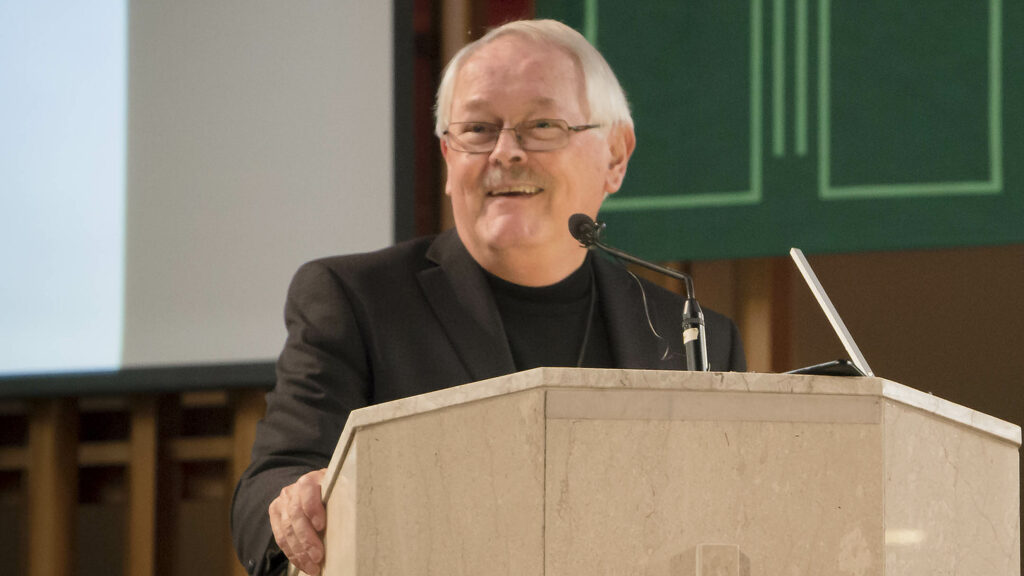The movie Million Dollar Baby tells the story of a young woman who becomes a professional boxer. Young, strong, and physically very attractive she captures your heart as, against all odds, she eventually rises to the top in her sport.
But then the story turns tragic; she is unfairly hit by an opponent and ends up paralyzed, her body broken and with it her health and attractiveness. And her condition is permanent, there is no cure.
She chooses to end her life through euthanasia.
I had gone to this movie with a young couple, both solidly committed to their church and their faith. Yet both of them were in strong sympathy with how this young woman chose to die.
Perhaps it was more their emotions than themselves speaking when they justified her manner of death: “But she was so young and beautiful! It wouldn’t have been right for her to spend the rest of her life in that terrible state!” In their young eyes, her debilitated state stripped her of her essential dignity.
What is dignity? When and how is it lost?
Dignity is a promiscuous term, constantly shedding different partners. It is also a sneaky term.
Sometimes it no longer means what it used to mean and nowhere is this truer than when the term is applied today to “death with dignity”? What defines death with dignity?
Shortly after Brittany Maynard died by euthanasia in a case that caught wide public attention, Jessica Keating wrote an article in America magazine assessing that death from various points of view. At one point she takes up the question of dignity and writes:
“The use of the term dignity to describe this death is deeply problematic, since it masks the reality of fear and equates dignity exclusively with radical autonomy, choice, and cognitive capability. The result is a not-so-subtle implication that the person who chooses diminishment and suffering dies a less dignified death.” (America, March 16, 2015)
In much of our talk about death with dignity today there is in fact the not-so-subtle implication that the person who chooses diminishment and suffering over euthanasia dies a less dignified death. That is hard to deny, given the dominant ethos of a culture wherein physical diminishment and suffering are seen as a very assault on our dignity.
This has not always been the case; indeed in former times sometimes the opposite was true, an aged, physically diminished body was seen as something dignified and beautiful.
Why is our view of dignity different today?
They are different because of how we conceive of dignity and beauty. For us, these have to do mainly with physical health, physical vitality, and the physical attractiveness of the human body.
For us, aesthetics is a house with one room – physical attractiveness. Everything else assaults our dignity. That makes it difficult for us to see any process that diminishes and humbles the human body by robbing it of its vitality and physical attractiveness as being a dignified one. And yet that is normally how the death process works.
If you have ever journeyed with someone dying from a terminal disease and been at their bedside when he or she died, you know that physically this is not pretty. Disease can do horrible things to the body.
But does this destroy dignity? Does it make one less beautiful?
Well, that depends on one’s spirituality and on what one considers as dignified and beautiful. Consider Jesus’ death. By today’s concept of dignity, his was not a very dignified death. We have always sanitized the crucifixion to shield ourselves from its raw “indignity”, but crucifixion was humiliating.
When the Romans chose crucifixion as a method of capital punishment they had more in mind than just ending someone’s life. Besides wanting to make a person suffer optimally and they also wanted to totally and publicly humiliate him by humiliating his body. Hence the person was stripped naked, with his genitals exposed, and when he went into spasms in the moments before death, his bowels would loosen. What can be more humiliating? What can be less beautiful?
Yet, who would say that Jesus did not die with dignity? The opposite. We are still contemplating the beauty of his death and the dignity displayed in it. But that is within a different aesthetics, one that our culture no longer understands.
For us, dignity and beauty are inextricably tied to physical health, physical attractiveness, and lack of humiliating diminishments within our physical body. Within that perspective there is, seemingly, no dignity to Jesus’ death.
I am the first to admit that the issue of death with dignity is an extremely complex one that raises legal, medical, psychological, familial, societal, ethical, and spiritual questions for which there are no simple answers.
But inside all of these questions there still lies an aesthetic one: what, ultimately, makes for beauty? How, ultimately, do we see dignity? Does a person with a still attractive, undiminished, physical body who voluntarily chooses to die before that beauty is despoiled by disease die more dignified than did Jesus?

